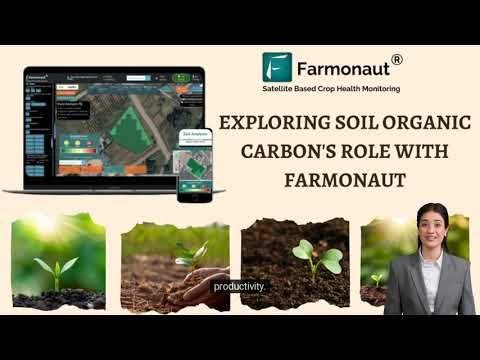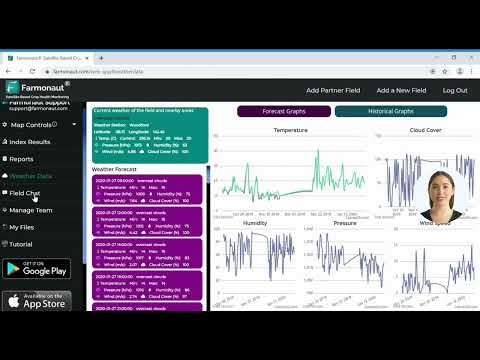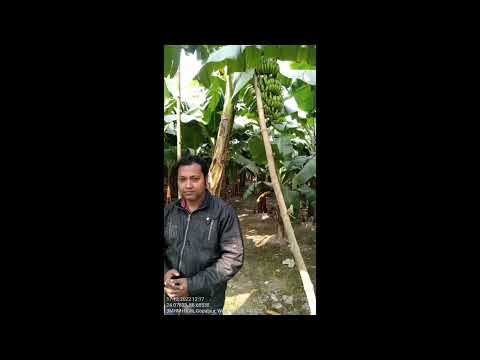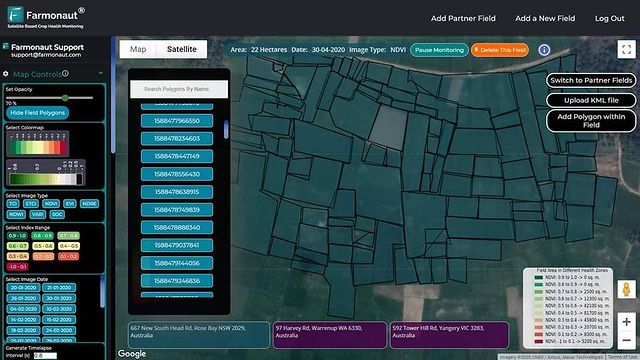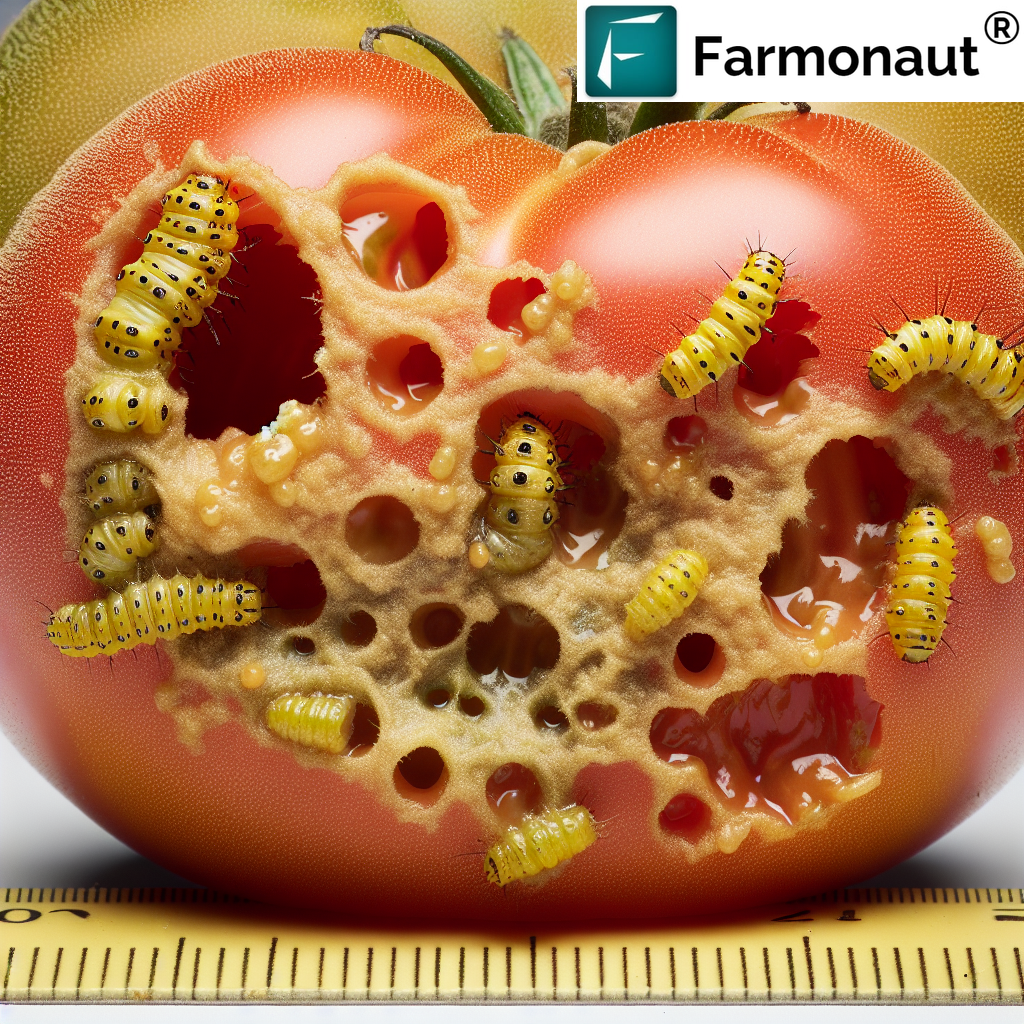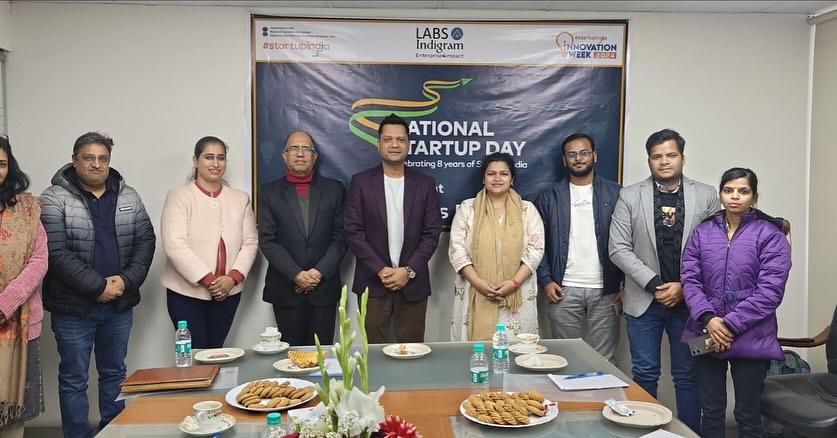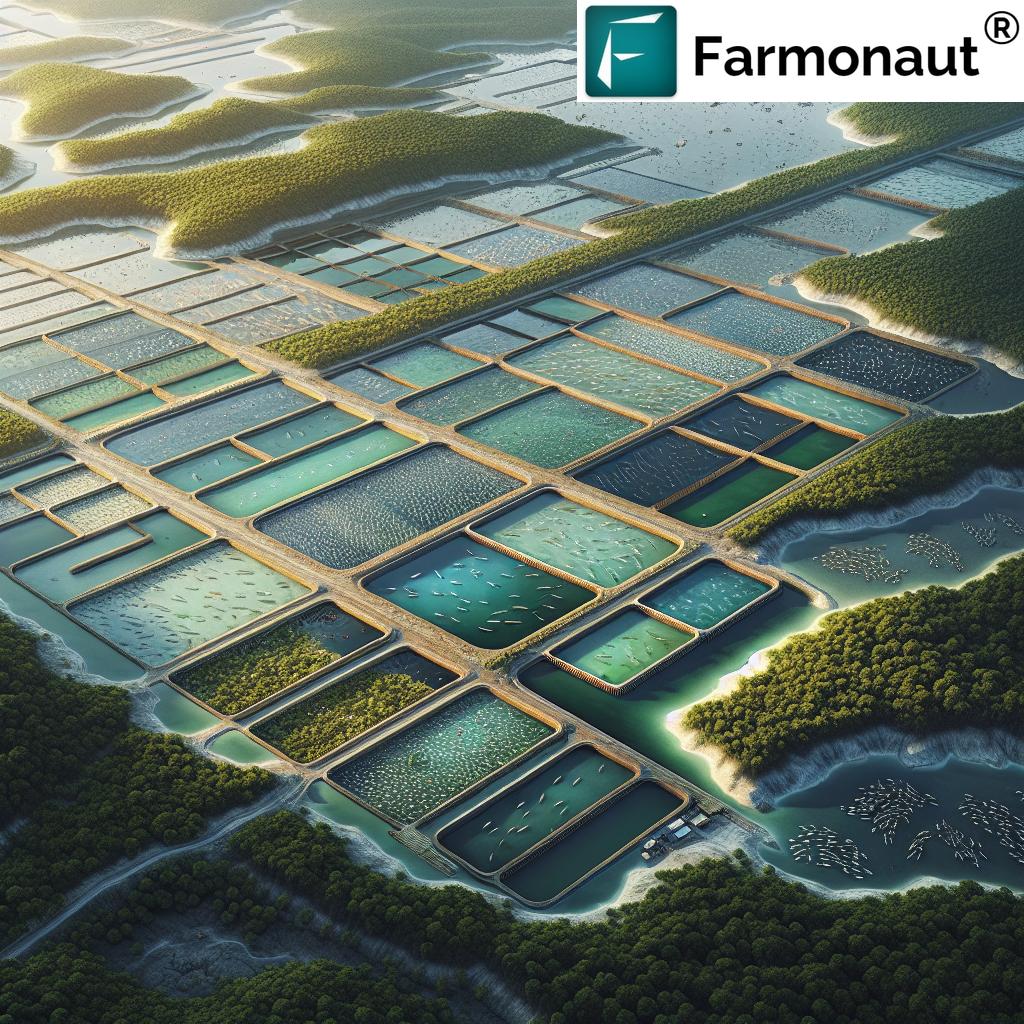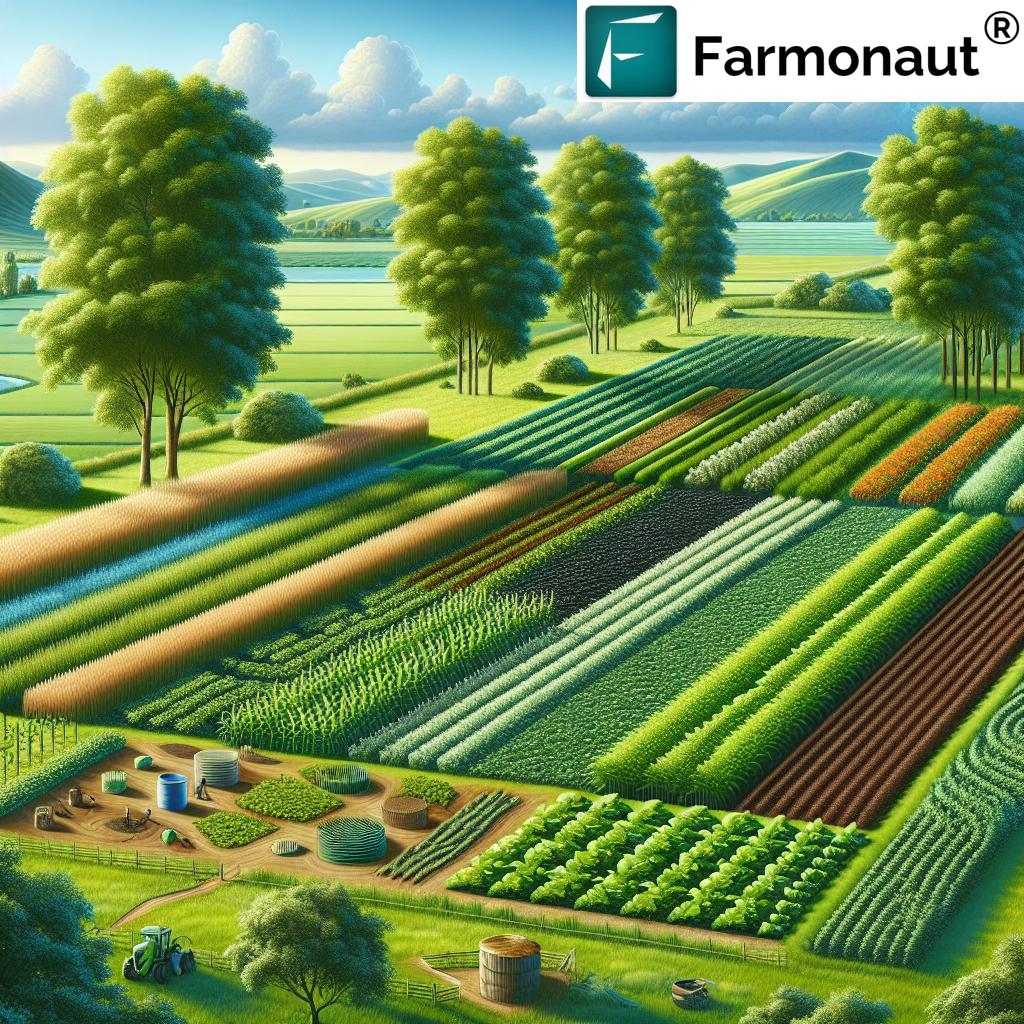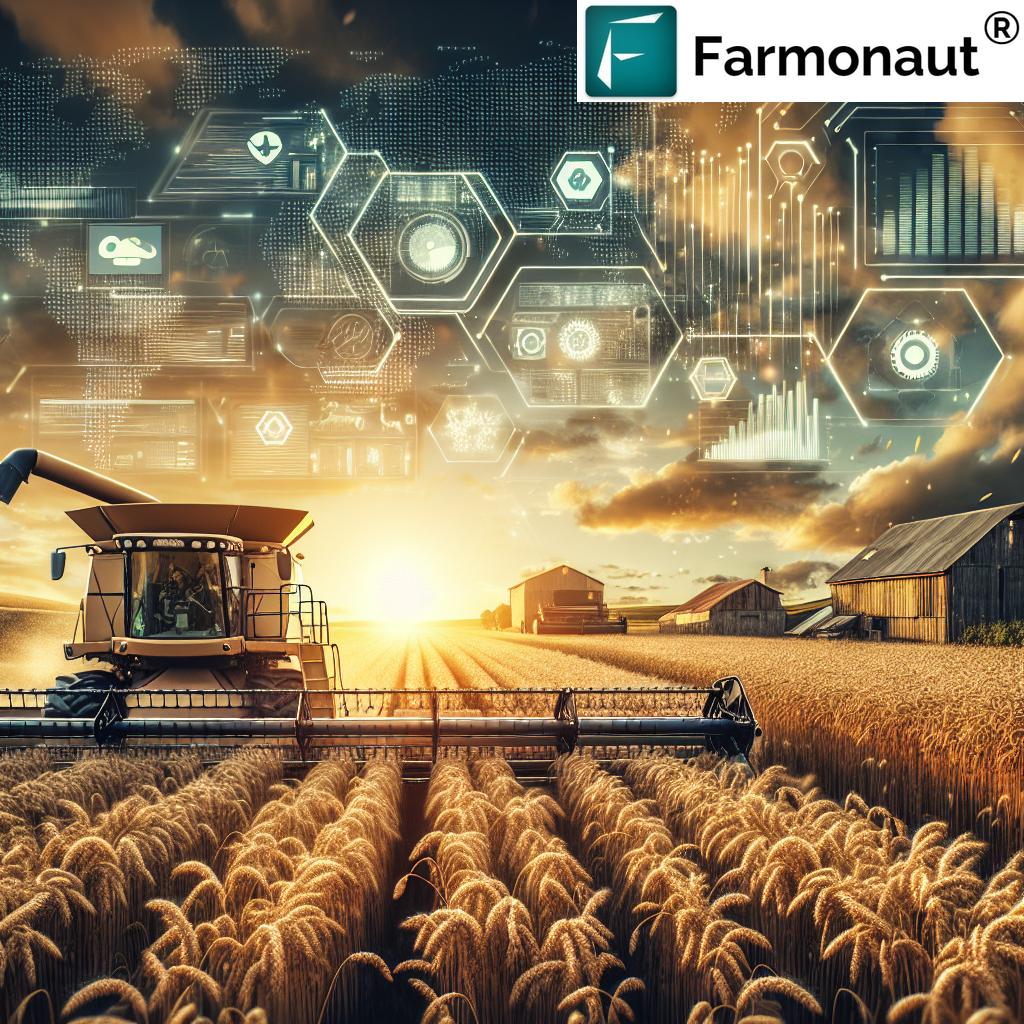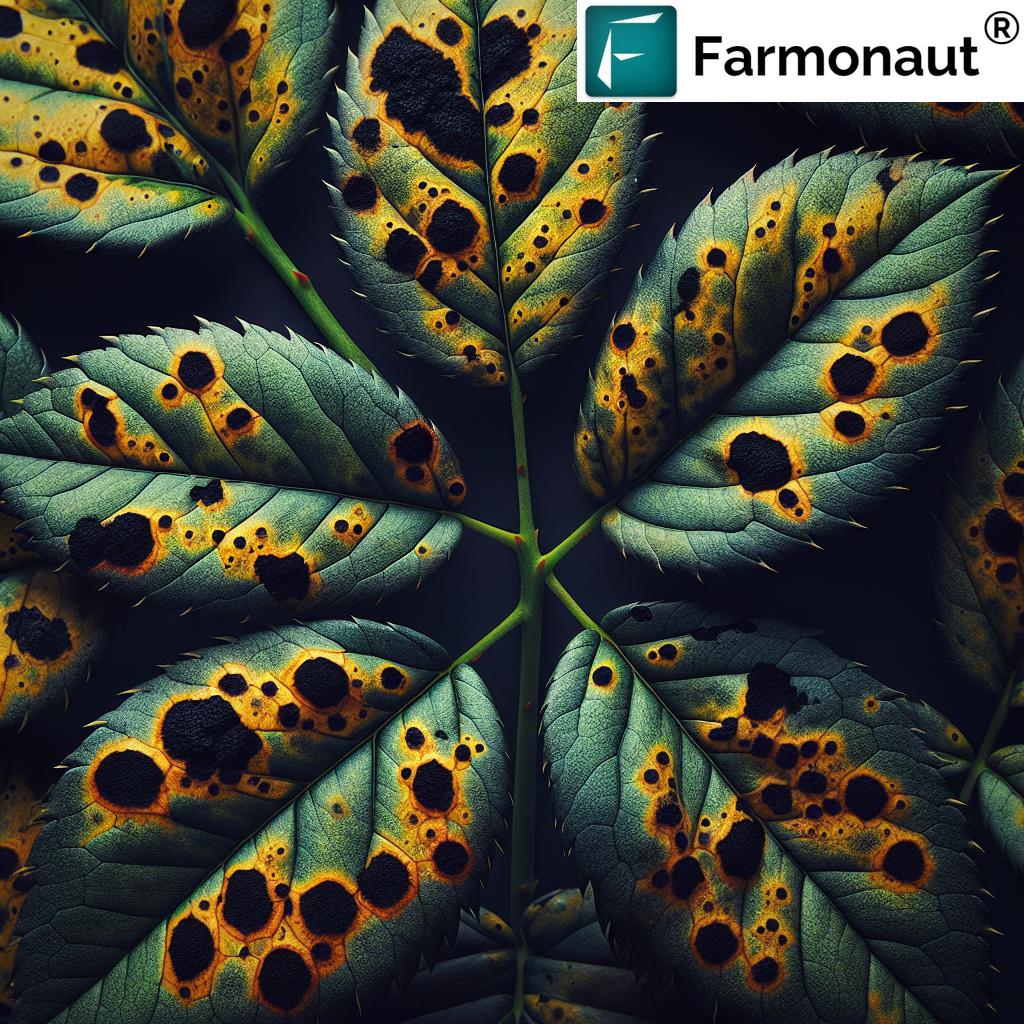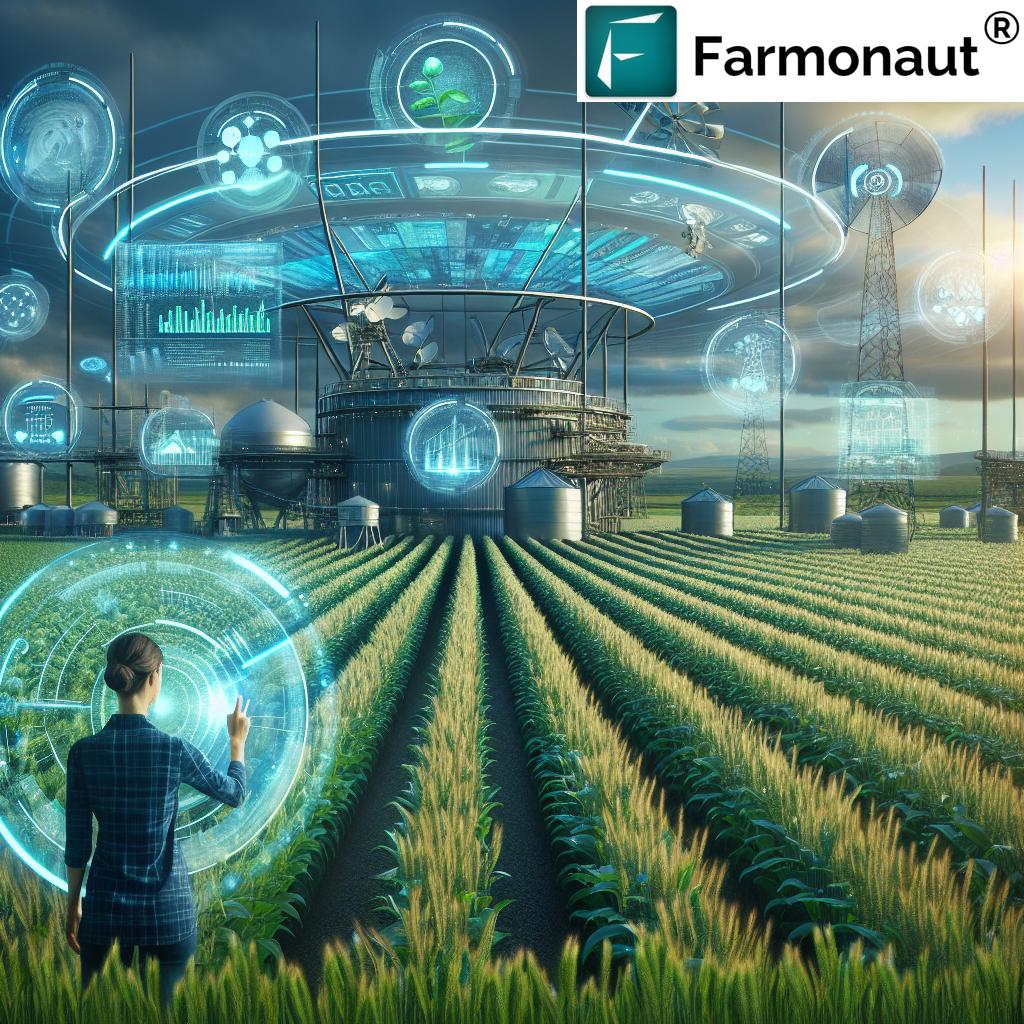Table of Contents
- Introduction: Why Sustainable Land Management is a Game Changer
- Principles of Sustainable Land Management
- 7 Shocking Sustainable Land Management Hacks for Success
- 1. Conservation Agriculture: The Power of Minimal Soil Disturbance
- 2. Contour Plowing & Terracing: The Natural Barriers Against Erosion
- 3. Agroforestry Systems: Integrating Trees for Productivity & Biodiversity
- 4. Silvopasture: Trees, Livestock, and Forage – The Perfect Trio
- 5. Integrated Pest Management (IPM): Smart, Sustainable Pest Control
- 6. Advanced Water Management: Retention, Harvesting & Efficient Irrigation
- 7. Carbon Footprinting & Blockchain Traceability: The Future of Transparent, Climate-Resilient Agriculture
- Comparison Table of Sustainable Land Management Hacks
- How Farmonaut Empowers Sustainable Land Management
- Key Benefits of Sustainable Land Management
- SLM Challenges and How We Can Overcome
- Frequently Asked Questions (FAQ) about Sustainable Land Management
- Conclusion: Securing Our Agricultural Future with SLM
“Sustainable land management can increase crop yields by up to 79% in degraded areas.”
7 Shocking Sustainable Land Management Hacks for Success
Focus Keyword: sustainable land management
Meta Description: Discover 7 shocking sustainable land management hacks for success. Boost agriculture productivity, conserve soil & water, and promote ecosystem health with Farmonaut.
We live in an era of dramatic change, where the relationship between agriculture, land, soil, water, and ecosystem health has never been more critical. If we are to continue increasing farm productivity, enhancing food security, and combating the dual threats of climate change and land degradation, we must reimagine the way we steward our land. This is where sustainable land management (SLM) comes in — a comprehensive, science-driven approach to land use that balances productivity and sustainability.
This comprehensive guide explores 7 proven, sometimes surprising “hacks” that can transform your approach to land, soil and water conservation, and farm productivity. We will weave in actionable examples, evidence-based techniques, and how technology providers like Farmonaut empower these practices so that farmers, agribusinesses, and policymakers alike can embrace a secure and sustainable agricultural future.
🌱 Principles of Sustainable Land Management
At the heart of successful sustainable land management are foundational principles that guide every decision we make about our lands:
- Conservation of Soil and Water Resources:
Preserving soil quality and water retention is the bedrock of sustainable agriculture. Practices such as no-till farming, contour plowing, and cover cropping not only preserve soil fertility but also reduce erosion and enhance water quality. - Biodiversity Preservation:
Protecting and integrating a variety of plant, tree, and animal species enhances resilience against pests and climate shocks, thus supporting robust, adaptable ecosystems. - Economic Viability:
SLM is not just about environmental outcomes. It ensures that farmers and communities sustain their income, making land management rewarding in the long term. - Social Equity and Cultural Relevance:
Community participation is essential. Practices should reflect the cultural, social, and economic realities of those who rely on land resources.
🔥 7 Shocking Sustainable Land Management Hacks for Success
We’ve curated seven actionable, research-backed hacks that are redefining sustainable agriculture practices. Each integrates centuries-old wisdom with modern science — and, increasingly, advanced technology such as satellite monitoring and AI for real-time, data-driven land stewardship.
1. Conservation Agriculture: The Power of Minimal Soil Disturbance
Why It Matters: Conservation agriculture is foundational to sustainable land management, emphasizing techniques that preserve soil structure, reduce erosion, improve soil fertility, and lower input costs. By reducing mechanical soil disturbance, maintaining a permanent organic cover, and encouraging crop diversification, we improve ecosystem health and create more productive, resilient farms.
- No-Till Farming: Eliminates traditional plowing, helping to preserve soil carbon, improve water infiltration, and support beneficial soil biology.
- Permanently Covered Soil: Use of cover crops and crop residues enables soil to retain moisture, suppress weeds, and minimize temperature fluctuations.
- Crop Rotation: Rotating plant species disrupts pest cycles, bolsters biodiversity, and improves nutrient cycling.
These methods can increase soil organic matter, promote higher crop yields even in degraded areas, and dramatically reduce land degradation.
Ready to further enhance your conservation agriculture game? Technologies like carbon footprinting from Farmonaut allow us to track soil carbon improvement, verify emissions reduction, and comply with sustainability certification requirements to meet modern market demands.
2. Contour Plowing & Terracing: The Natural Barriers Against Erosion
Why It Matters: Serious losses of topsoil — and consequently, nutrients and productivity — occur due to water-driven erosion. Contour plowing and terracing are traditional yet highly effective soil and water conservation hacks proven to reduce runoff, improve water retention, and protect long-term farm fertility.
- Contour Plowing: By plowing along the natural contours of the land rather than vertically, we can slow water flow and minimize soil movement.
- Terracing: Construction of graded steps on hilly fields transforms steep slopes into productive plots, reduces risk of landslides, and enables cultivation in areas previously too vulnerable to farm.
- Strip Cropping: Combining strips of perennial grasses or legumes with annual crops along the contour serves as living barriers against water and wind erosion.
A single season of effective contour interventions can reduce topsoil loss by up to 50% annually!
Did you know? You can use Farmonaut’s real-time land monitoring tools to identify erosion hotspots and plan precise interventions for optimal soil and water conservation. Developers can integrate Farmonaut’s API for such insights at scale, making SLM strategies smarter for all.
3. Agroforestry Systems: Integrating Trees for Productivity & Biodiversity
Why It Matters: Agroforestry — the integration of trees and shrubs alongside crops and/or livestock — leverages nature’s diversity to make agriculture resilient, profitable, and ecologically balanced. By blending forestry and farming, these systems offer a striking array of benefits.
- Biodiversity Preservation: Agroforestry enhances the structural and species diversity of lands, improving pollinator support and pest regulation.
- Improving Soil Fertility: Tree roots stabilize soil, fix nitrogen, and support soil microbiome health, boosting long-term productivity.
- Additional Income Streams: Farmers can access new markets for timber, fruit, fodder, fuelwood, medicinal plants, and even honey.
- Climate Change Mitigation in Agriculture: Trees in agroforestry systems sequester significant carbon, cooling fields and buffering climate extremes.
- Water Conservation: Tree canopies slow rainfall impact; deep roots improve soil water retention.
For a stepwise approach to sustainable agroforestry, the Farmonaut Crop Plantation & Forest Management Advisory supports farm planning, monitoring, and ongoing management — making integration simpler and more effective than ever before.
4. Silvopasture: Trees, Livestock, and Forage – The Perfect Trio
Why It Matters: Silvopasture is the art of managing trees, forage, and livestock together on the same land. It’s one of the most mutually beneficial sustainable agriculture practices, boosting land-use efficiency and resilience.
- Enhanced Productivity: By combining tree crops with livestock grazing and forage production, we can maximize output per hectare, often increasing total farm income.
- Improved Animal Welfare: Animals benefit from shelter provided by trees, better-quality forage, and lower heat stress — leading to healthier livestock and higher yields (meat, milk, wool).
- Soil Health & Preservation: This integrated approach reduces compaction, encourages nutrient cycling, and improves water conservation.
- Long-Term Sustainability: Trees in silvopasture systems provide ongoing harvests (timber, nuts, fruits) while protecting pastures and supporting ecosystem health.
Wondering how smart management can simplify complex silvopasture systems? Farmonaut’s Large-Scale Farm Management App aids in monitoring plant, forage, and livestock areas in real time, optimizing both output and ecological function.
“Soil erosion control techniques can reduce topsoil loss by nearly 50% annually.”
5. Integrated Pest Management (IPM): Smart, Sustainable Pest Control
Why It Matters: Outdated, chemical-heavy pest control damages ecosystem health, water quality, biodiversity, and sometimes even our health. Integrated pest management (IPM) flips the script: we combine biological, cultural, and precise chemical controls only when necessary — safeguarding both crops and nature.
- Biological Controls: Use of natural predators (like ladybugs for aphids), parasites, and beneficial microbes to suppress pests.
- Cultural Practices: Rotating crops, intercropping, careful planting schedules, and resistant crop varieties reduce pest build-up.
- Targeted Chemical Use: Only as a last resort, with the goal of minimizing harmful residues and impact on beneficial species.
- Monitoring and Forecasting: Technologies such as farm-based sensors, remote monitoring, and satellite data help us predict pest outbreaks and take earlier, less-disruptive action.
Farmonaut’s Jeevn AI-Powered Advisory System harnesses the power of real-time big-data analytics to deliver customized, field-specific IPM guidance — dramatically reducing pesticide costs and environmental impact while maintaining high crop yields.
Looking to streamline pest and crop management into your own solution? Check out the robust, developer-friendly Fleet and Resource Management API by Farmonaut.
6. Advanced Water Management: Retention, Harvesting & Efficient Irrigation
Why It Matters: Agriculture is the largest consumer of fresh water globally. Efficient water use is essential for sustainable land management, ensuring that our soil and water conservation efforts nurture both crops and landscapes.
- Rainwater Harvesting: Capture and channel rainfall using storage ponds, tanks, or swales for irrigation and livestock.
- Drip Irrigation: Minimizes water loss by targeting the root zone, which can save up to 60% of water compared to traditional methods.
- Contour Farming for Water Retention: Terraces and contour strips help slow run-off and enhance natural groundwater recharge.
- Moisture Monitoring: Use of multispectral satellite data to track soil moisture and forecast irrigation needs — this is a specialty where Farmonaut shines!
By embracing smart water management, we bolster crop productivity while preserving this vital resource for the future.
Explore real-time insights into soil moisture and water requirements using the advanced satellite-based monitoring app from Farmonaut.
7. Carbon Footprinting & Blockchain Traceability: The Future of Transparent, Climate-Resilient Agriculture
Why It Matters: As markets and governments demand more transparency, responsible farming extends beyond productivity and resource conservation. Tracking our farms’ carbon emissions and ensuring supply chain traceability is now crucial to access new markets, secure financing, and prove sustainability claims.
- Carbon Footprinting: Monitor, manage, and ultimately reduce the greenhouse gas footprint of farm operations. This not only supports climate change mitigation in agriculture but also unlocks access to carbon credit markets and eco-labels.
- Blockchain Product Traceability: Ensures that every input, cultivation step, harvest, and shipment is securely recorded, delivering a transparent product story from farm to consumer and improving market trust.
- Data Integration: With smart platforms like Farmonaut’s Traceability solution, we can easily prove our environmental stewardship — opening doors to better prices, loyal customers, and a sustainable reputation.
These digital tools and transparent records redefine what it means to farm responsibly in the 21st century.
👩🌾 Comparison Table of Sustainable Land Management Hacks
| Hack Name | Description | Estimated Cost | Estimated Productivity Boost (%) | Impact on Soil Health | Impact on Water Conservation | Environmental Benefit Highlights |
|---|---|---|---|---|---|---|
| Conservation Agriculture | Minimal tillage, permanent soil cover, crop rotation | Low-Medium | 10-25% | High | High | Improves soil structure, organic matter, yields; major erosion reduction |
| Contour Plowing & Terracing | Plowing along contours and building terraces on slopes | Medium | 5-20% | Medium-High | High | Strong erosion prevention, improved water retention |
| Agroforestry Systems | Integrating trees/shrubs with crops and/or livestock | Low-Medium | 15-35% | High | Medium-High | Boosts biodiversity, carbon sequestration, diversified income |
| Silvopasture | Combining trees, forage, livestock grazing | Medium | 20-35% | High | Medium-High | Improved animal welfare, diversified production, carbon sink |
| Integrated Pest Management (IPM) | Biological, cultural, smart chemical pest controls | Low | 5-20% | Medium | Medium | Reduced pollution, protects beneficial species, food safety |
| Advanced Water Management | Rainwater harvesting, drip irrigation, water retention | Low-Medium | 10-30% | Medium | High | Reduces water waste, boosts drought resilience |
| Carbon Footprinting & Blockchain Traceability | Farm-level emission tracking, secure product records | Medium | 5-25% | Medium | Medium | Market access, climate compliance, customer trust |
🚀 How Farmonaut Empowers Sustainable Land Management
Modern sustainable land management is as much about data and technology as it is about soils, water, and plants. Farmonaut delivers cutting-edge satellite monitoring, AI-driven advisory, blockchain traceability, and resource management to make the adoption of SLM painless, affordable, and scalable.
- Satellite-Based Crop Health Monitoring: Track NDVI, soil moisture, crop stress, and more in real time — giving us a bird’s-eye view for timely interventions.
- Jeevn AI Advisory: Personalized, AI-generated recommendations for everything from planting to integrated pest management.
- Blockchain-Based Traceability: Secure, transparent supply chain records that meet retailer and consumer expectations for sustainable operations.
- Carbon Footprinting: Quantify on-farm greenhouse gas emissions and progress towards climate targets.
- Fleet and Resource Management: Optimize usage of agrichemicals, labor, and machinery for maximum productivity with minimum resource waste.
- API Access: Farmonaut’s API enables custom solutions and integration with other agritech platforms. Check the full API documentation here.
Whether you’re a smallholder farmer or managing large agricultural enterprises, Farmonaut’s solutions can be scaled and tailored for your unique needs — ensuring economic viability, social equity, biodiversity preservation, and long-term productivity.
🌏 Key Benefits of Sustainable Land Management
- Soil Health: Practices like no-till, agroforestry systems, and cover cropping enhance soil organic matter, water retention, and long-term fertility.
- Increased Biodiversity: SLM supports diverse plant, tree, and animal life, building a resilient ecosystem that withstands shocks and supports higher yields.
- Water Conservation: Efficient use and recycling of water secures this crucial resource for future generations.
- Productivity & Profitability: Boosted crop yields and diversified income sources from products like timber, fruit, and specialty crops make agriculture more robust.
- Climate Change Mitigation: SLM removes carbon from the atmosphere, enhances natural carbon sinks, and protects against adverse climate events.
- Social and Economic Resilience: By supporting farmer incomes, reducing risk, and encouraging community engagement, SLM creates a more stable agricultural sector.
⚖️ SLM Challenges and How We Can Overcome Them
While sustainable land management is impactful, challenges do arise:
- Knowledge Barriers: Many farmers and local communities lack awareness and training in modern SLM approaches. Digital advisory services like those offered on the Farmonaut platform place knowledge at their fingertips, making upskilling accessible and affordable.
- Cost and Investment: Initial investments can be a barrier for smallholders. However, affordable, scalable solutions from providers like Farmonaut are trending down this cost curve — especially when compared to conventional precision farming tools.
- Policy Support: Advocacy is needed to encourage governments and institutions to fund sustainable agriculture and ecosystem preservation programs, as well as to incentivize adoption by offering grants or tax benefits.
- Climate Variability: Adapting SLM practices to increasingly erratic weather conditions is essential. Integrated, real-time monitoring through Farmonaut helps us react rapidly and proactively.
We can address these challenges by fostering collaboration between farmers, researchers, technology providers, and policymakers. With better data, training, and financial access, universal SLM adoption is within reach.
❓ Frequently Asked Questions (FAQ) about Sustainable Land Management
What is sustainable land management (SLM)?
SLM is an integrated, holistic approach to land use that balances agricultural productivity, environmental health, and social equity by conserving soil and water resources, supporting biodiversity, and maximizing both economic and ecological outcomes.
What are the top benefits of adopting SLM?
- Increases farm productivity in the long-term
- Combats soil degradation and water resource depletion
- Enhances biodiversity and ecosystem resilience
- Supports climate change mitigation by storing more carbon
- Generates diversified income for farmers and communities
Does SLM require new technology for success?
While many SLM methods have been practiced for generations, adopting new technologies like satellite monitoring, AI advisory, and blockchain traceability can dramatically increase precision, efficiency, and market access for both individual and large-scale farms.
How does SLM help in climate change mitigation in agriculture?
By increasing soil organic carbon, reducing deforestation, integrating agroforestry, and minimizing inputs like fertilizers and fuel, SLM substantially reduces greenhouse gas emissions from agriculture while making farms more climate-resilient.
What role does Farmonaut play in sustainable land management?
Farmonaut provides affordable, easy-to-use technological tools for farm management, health monitoring, resource optimization, and transparency — empowering everyone from smallholder farmers to governments to advance SLM goals with less effort and more accuracy.
How can I integrate Farmonaut solutions into my operation?
You can use Farmonaut’s web and mobile apps, access satellite imagery and data via API, and even automate farm monitoring or traceability with Farmonaut’s suite of solutions.
🔗 Conclusion: Secure Our Agricultural and Environmental Future with SLM
Our sustainable land management journey is about fusing tradition with innovation. By embracing locally relevant, eco-friendly farming, integrating smart monitoring and transparent record-keeping, and prioritizing both soil and water conservation and economic viability, we can improve ecosystem health, increase farm productivity, and safeguard food security.
Technology is a powerful accelerator for this transformation. Farmonaut’s accessible, data-rich, and precision agriculture solutions enable all of us to rise to the challenge: a thriving agricultural sector, robust environment, and resilient rural communities for generations to come.
Start your journey towards truly sustainable agriculture & environmental stewardship today. Try Farmonaut’s platform on Web, Android, or iOS.







